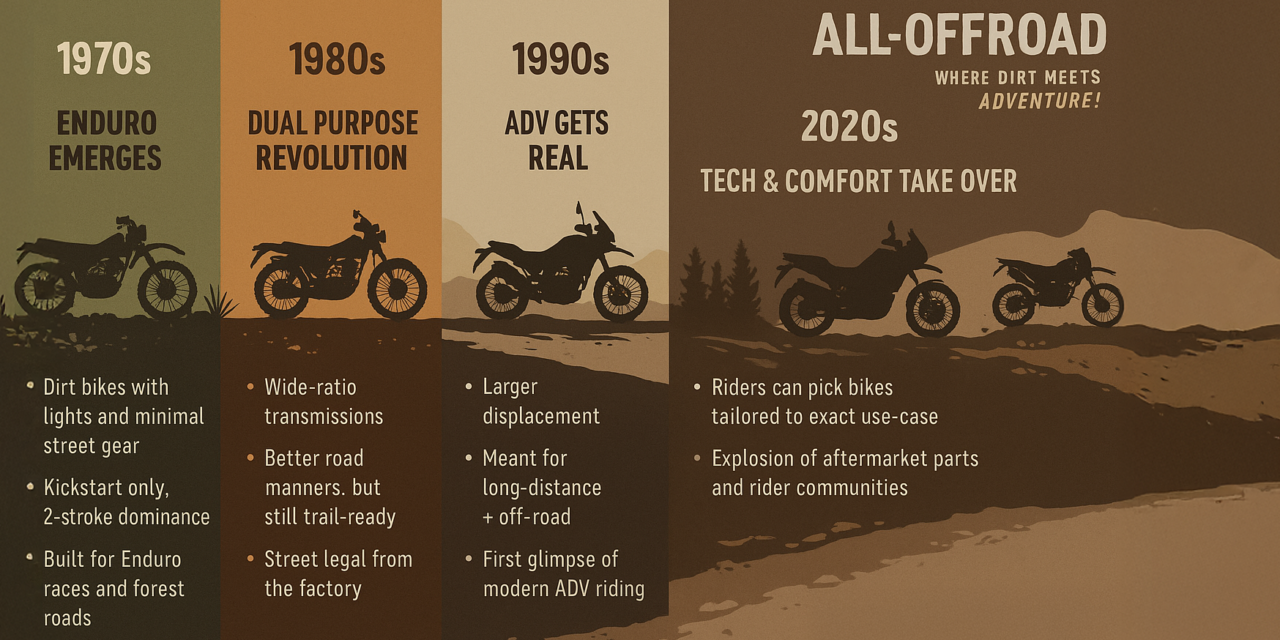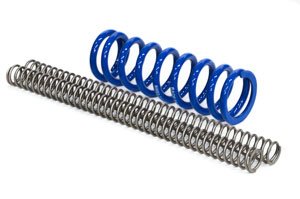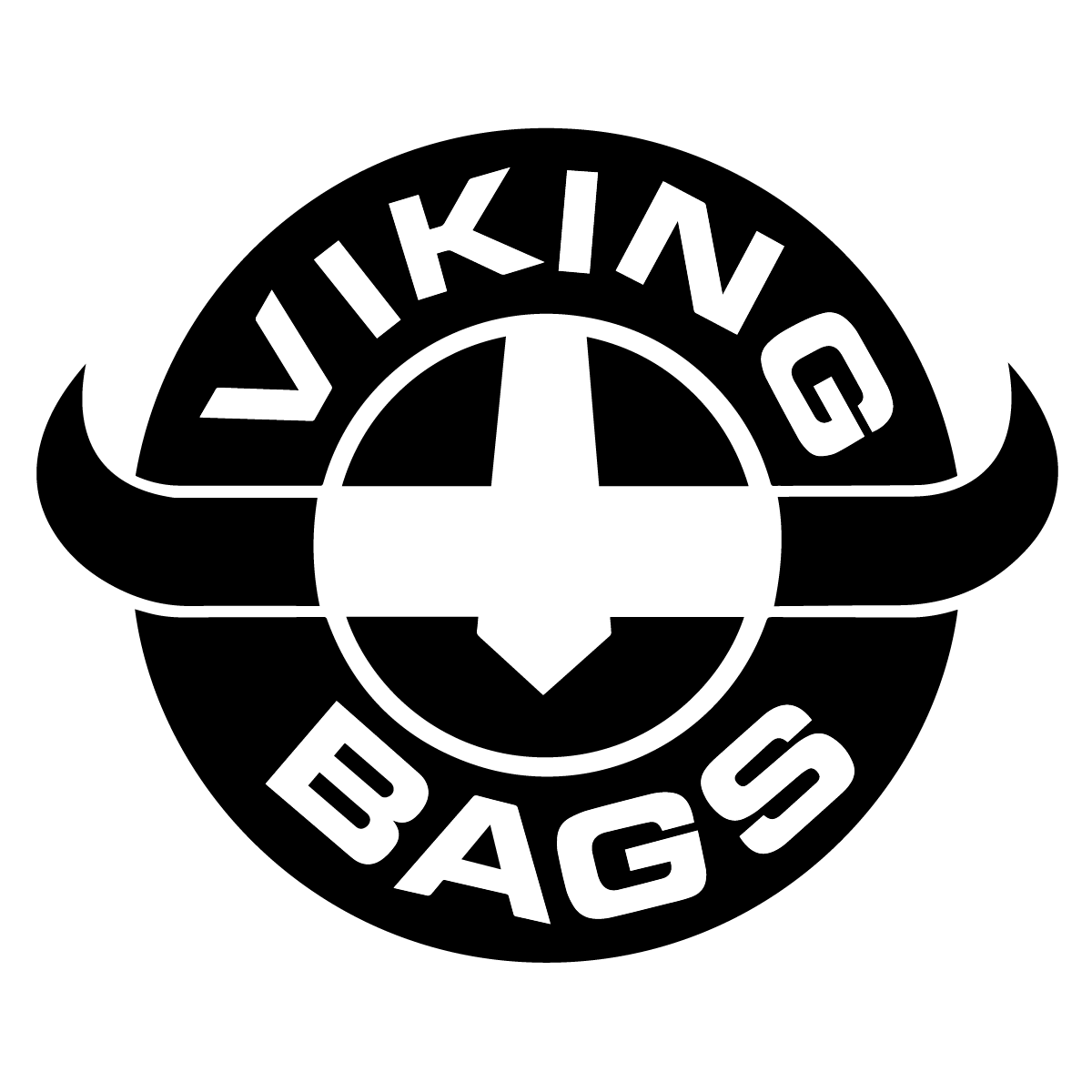When it comes to dirt bikes with license plates, the world’s been on a wild ride—and I’ve been hanging on the bars since the early days. From raw, smoke-belching two-strokes to sleek, tech-packed enduro weapons, the evolution of street-legal off-road motorcycles is more than a gearhead’s timeline—it’s personal. So, let’s rip through the history of Enduros, Dual Sports, and Adventure Bikes, and I’ll throw in my own lineup to show how this journey’s played out from my garage to the trails.
The 1970s: Birth of the Enduro (And My First Love)
Back in the ‘70s, we didn’t call them dual sports. We called them Enduros. They were dirt bikes first—with just enough hardware bolted on to make them street legal. Headlight? Check. Taillight? Check. Enough buzz to get sideways in the woods and enough legality to grab a burger afterward.
My first ride? A 1970 Suzuki TS250. A two-stroke beast that smelled like freedom and sounded like a chainsaw at war. It came street-legal from the factory, part of Suzuki’s TS lineup meant to conquer trails and traffic alike. The Enduro scene was simple, rowdy, and full of grit.
The 1980s: The Rise of the Dual Sport
By the ‘80s, the term Dual Sport started popping up. Bikes got a little heavier, a little more refined. They had wider gear ratios, more reliable charging systems, and suspensions that could handle both pavement cracks and trail roots. The idea was clear: one bike to do it all.
Enter my 1987 Honda XL600. Kickstart only, thumpy and tough. It was my do-everything machine—commuter, trail bike, escape pod. It had a wide seat and an even wider grin.
The 1990s: DIY and the Birth of the Adventure Bike
The ‘90s were a turning point. On one end, you had guys like me modding dirt bikes to make them road legal—like my 1997 Honda XR600, which I outfitted with a Baja Designs lighting kit and a whole lot of paperwork. On the other end, the Adventure Bike category was quietly being born.
BMW’s R80GS started making waves in the late ‘80s, but by the ‘90s, the idea of crossing continents on a big dual-purpose bike started catching on. These bikes weren’t just trail-capable—they were globe-trotters.
The 2000s–2010s: Adventure Bikes Take Over
Adventure bikes exploded. Tall tanks, tall windscreens, and GPS cradles became the norm. These bikes were more about covering miles than clearing logs—but they could still find their way down a fire road or BDR route if asked nicely.
Meanwhile, electric tech snuck onto the scene. In 2013, I picked up a Zero DS—an all-electric dual sport that felt like riding the future. Silent, torquey, and a total conversation starter at every trailhead.
The 2020s: The Full Spectrum
Today, the lines are clearer—and blurrier—than ever. You’ve got:
- Trail bikes for tight woods
- Plated enduros like my 2024 Husqvarna FE 350s and FE 501s—basically race bikes with blinkers
- Middleweight dual sports for all-day exploration
- Big-bore ADV bikes built to eat miles and spit out dust
I even brought a 2012 Yamaha WR250F back to life and made it street-legal, because why not? With today’s tech, gear, and community, it’s easier than ever to make the bike you want, and ride it where you want.
A Personal Timeline (from Kickstart to Kill Switch)
- 1970 Suzuki TS250 – My gateway to the Enduro life
- 1987 Honda XL600 – First true dual sport
- 1997 Honda XR600 – Converted to street legal with Baja Designs kit
- 2013 Zero DS – Electric pioneer
- 2024 Husqvarna FE 350s & FE 501s – Modern plated weapons
- 2012 Yamaha WR250F – Converted for double duty
The dual sport story isn’t just history—it’s evolution. It’s how we’ve gone from bare-bones trail bikes to multi-tool machines. And if you’re reading this, chances are you’re somewhere along the same path, throttle cracked, eyes on the horizon.
Because in the end, it’s not about what you ride—it’s about where the dirt takes you.








